With the amount of money spent on applying polyurethane, it is helpful to know that you can reuse some tools.
From the polyurethane itself to the rags, sandpaper, mineral spirits, and tack cloths, nearly everything else can only be used once, but not the brush.
However, if you don’t know how to clean polyurethane brushes, that’s money down the drain.
In this article, I’ll show you;
You’ll also learn how to choose the right brush and why it is important to take good care of your tools.
Here’s a quick overall version of how to clean polyurethane from brushes.
Use clean water and soap for cleaning water-based polyurethane brushes. For oil-based polyurethane brushes, clean with mineral spirit. Then scrub the polyurethane brush under running water (and soap) with a nylon brush. Let the brushes dry and store them in cupboard packages.
There are different types of brushes that can be used to apply polyurethane.
When you’re applying oil-based polyurethane, you should use a brush with natural bristles. They are made with animal hair, so they are better equipped at absorbing and spreading oil finishes.
The downside of natural bristles is that they are pretty expensive, so it is important to take good care of them.
Synthetic bristles, particularly synthetic nylon bristles, are best for the application of water-based finishes. This type of brush does not pick up a lot of moisture, making it the best brush for water-based polyurethane.
Synthetic bristles are arguably more versatile than natural bristles, give a more even coat, and are cheaper.
Now, it’s time to look into how to wash polyurethane brush.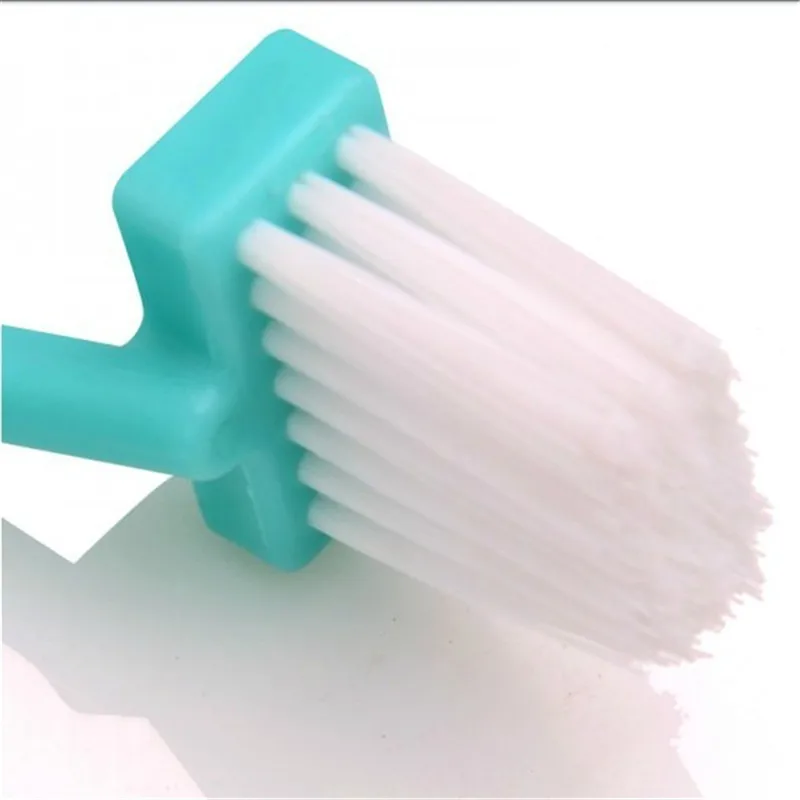
The process for cleaning a brush used for water-based polyurethane is so simple; it is often overlooked. All it takes is a few minutes, and your synthetic brush will be ready for use.
Here’s how to clean polyurethane off brush.
Get three cups that are large enough for you to submerge the brush up until the ferrule – the metal part that holds the bristles.
Insert the brush in the first cup and bend it back and forth so that the water gets in-between the bristles and up to the ferrule. Do this a few times until the water changes color.
When one cup of water becomes dirty, move on to the next one and repeat the process until the water in the final cup is clear.
Head over to the sink and rinse the brush with running water. Then pour some dish soap on it and give it a good scrub with your hands.
Wash it for about two or three times or until the bristles feel squeaky clean.
You can either hang the brush over the sink or hang it in your workshop. The brush will be completely dry by the next day and ready for reuse.
Brushes used to apply oil-based polyurethane are significantly more dirty than synthetic brushes.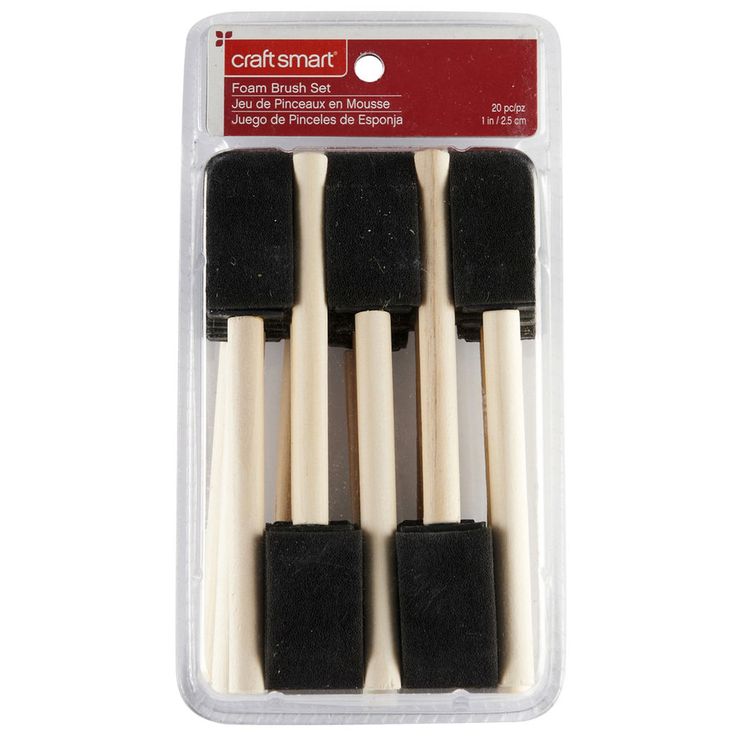 However, you can still clean the polyurethane brush in a few minutes. Always clean your brushes when they are still damp.
However, you can still clean the polyurethane brush in a few minutes. Always clean your brushes when they are still damp.
Pour mineral spirits into three or four cups. There should be enough spirit in each cup for you to submerge the brush up until the ferrule.
Submerge the brush into the first cup of mineral spirits and hold it down so that all of the bristles get covered. Next, stir the brush about in the cup, bending over from side to side so that the mineral spirit gets in-between the bristles.
Once the color of the mineral spirits changes (turns dark brown), move on to the next cup. Repeat the process in all three cups, making sure you wait patiently for the color to change in each one.
Repeat the process in all three cups, making sure you wait patiently for the color to change in each one.
Keep going until the color no longer changes despite slushing the brush around in the cleaning agent. You might need to go through this process four or five times to get it ready for the next step, so feel free to get more cups of mineral spirit if needed.
Even after the mineral spirits remove all the polyurethane from the brush, you still need to wash it thoroughly.
First, rinse the brush under running water, then apply household dish soap and give it a thorough scrubbing.
Run your fingers in-between the bristles, press it against your palm, and just scrub it however you can with your hands.
The first pass with dish soap won’t lather, as the mineral spirits are still in the brush. You need to get all of this out.
Rinse and repeat until you get a clear, generous lather from the brush with the same quantity of soap.
Put the brush at the bottom of the sink, apply some soap on it, and give it a gentle scrub with a nylon brush. The nylon brush will be able to clean between the bristles better than your hand can with significantly less pressure.
You may need to repeat this step one or two more times before the brush is completely oil-free and squeaky clean.
You can either hang the brush over the sink or hang it in your workshop. The brush will be completely dry by the next day and ready for reuse.
When you are making a career out of woodworking, and even if you’re not, you will come to appreciate the importance of always being ready. While you would probably get advanced notice for some jobs, some pleasant surprises might spring up, and you should be ready to act.
Having your brush ready can save you from having to go out to buy one at a moment’s notice or trying to wash a hardened brush you ignored since your last job.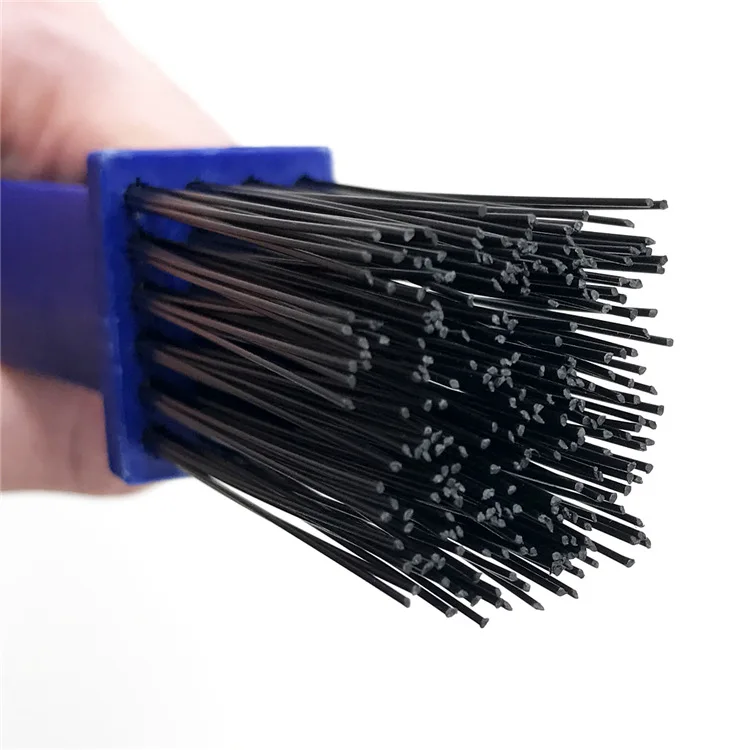
When you don’t wash your brush early, it becomes calcified in the polyurethane and much harder to wash. You can then end up damaging the bristles as you wash them.
So, the next time you use the brush, the application won’t be as even as before, and you will need to put in more effort to get a smooth finish.
You may be thinking, “It is water-based polyurethane. It’s thin. It won’t have an effect later on. The brush won’t need cleaning.” You will be wrong.
As long as it wasn’t clean water that the brush was used for, it’ll have adverse effects on the quality.
When people know you as the DIY pro, they’d always expect you to have some tools handy. So if someone comes to your house to ask for a brush, it’s good to have one ready. Saying, “Oh, give me a second to clean up,” is not a good look.
An extension of this point is the need to always have a clean and organized workshop.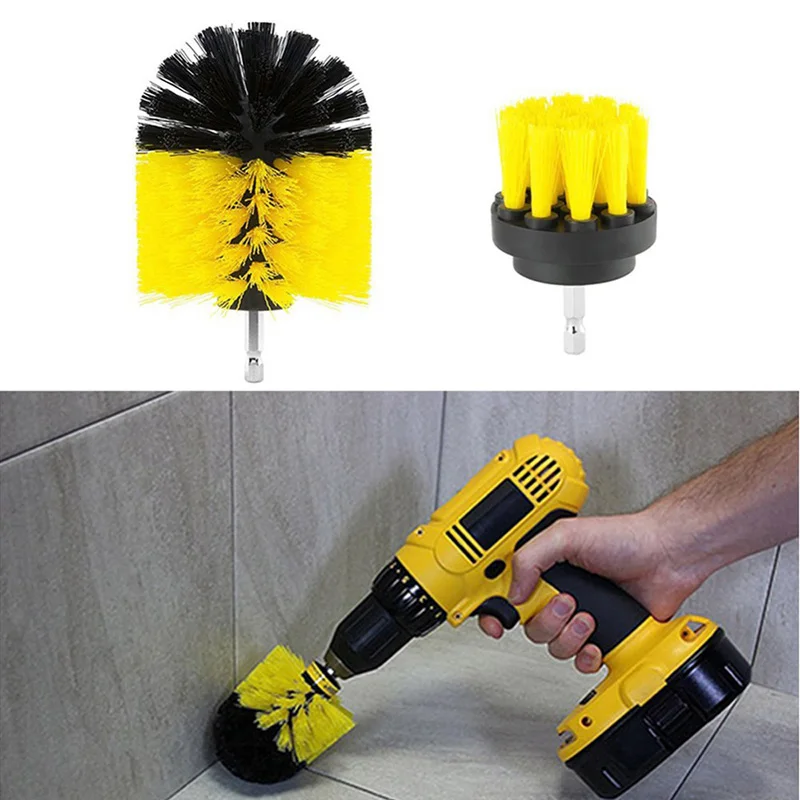
How long can a brush last? If it’s a quality brush that you look after keenly, it can last for up to a decade or more before it starts letting you down.
Both natural and synthetic brushes can last for ages if you clean them immediately after jobs and keep them dry when not in use.
As you probably know by now, polyurethane contains VOCs, and you probably also know that they can be toxic with long-term exposure. That’s a risk you shouldn’t take.
Keep your tools clean and all your chemicals covered when not in use.
Read Also: Best Brush to Paint Baseboards
Here are a few questions on how to wash polyurethane off brush.
Yes, you can reuse a polyurethane brush. As long as the bristles are intact, you can keep using the brush you use for either water-based or oil-based polyurethane applications.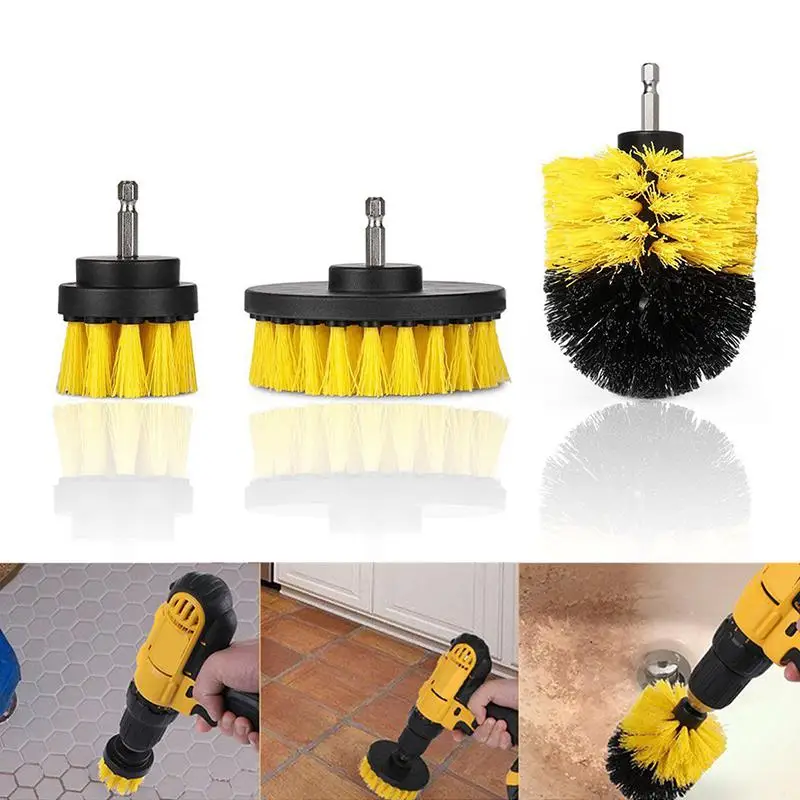 Preserve the integrity of your brushes by cleaning them immediately after jobs, following the steps outlined in this post.
Preserve the integrity of your brushes by cleaning them immediately after jobs, following the steps outlined in this post.
While you can use the same brush to apply both water-based polyurethane over oil-based polyurethane, you will not get the same results with both. Natural brushes are better suited for oil-based applications, while synthetic nylon brushes are much better for water-based polyurethane.
However, if you don’t have an option, you can use the same brush as long as you thoroughly cleaned it after your last job.
If you used the brush for water-based polyurethane, you don’t need to clean it with paint thinner. Instead, all you’ll need is clean water and regular dish soap.
For oil-based polyurethane brush, dip it in mineral spirits or turpentine. You will then need to give it a good scrub with a nylon brush and regular dish soap.
Yes, you can use a roller with polyurethane. However, the type of roller and how often you use it will depend on what kind of surface you are applying polyurethane. To be safe, we recommend using a foam roller for smooth surfaces and a bristle brush for textured surfaces to avoid damaging them with your bristles or your foam roller.
As you can see, learning how to clean a polyurethane brush will save you a lot of money in the long run. Instead of buying a new brush for each job, you can use the same one for years.
Besides that, there are other advantages of keeping your tools clean, such as protecting your health and your image as a professional.
How have you been cleaning your brushes? Leave a comment below. Who knows, we might learn something.
Polyurethane brushes can be expensive, which is one reason why you should take care of them. And if you do so properly, they can last for years to come.
And if you do so properly, they can last for years to come.
But how can you clean polyurethane brushes?
In this post, I’ll answer all of your questions about cleaning polyurethane brushes including how to clean both oil-based and water-based polyurethane brushes, how you can clean them without water, and much more!
KEY TAKEAWAYS:
To clean a polyurethane brush, start by determining what kind of polyurethane is on the brush. For water-based poly, use warm water and soap to clean the brush. For oil-based poly, use mineral spirits or paint thinner to remove the polyurethane. Always store your brushes in a cool, dry space to ensure that last for years to come.
In This Article:
1
There are two different types of polyurethane: water based and oil based.
Water based polyurethane dries faster than oil based polyurethane, but it can raise from wood grain and isn’t that durable.
Oil based polyurethane, on the other hand, takes longer to dry, but it penetrates wood better and is more durable.
Both kinds of polyurethane are used often, though oil based polyurethane is more popular because of its range of attractive qualities.
When it comes to cleaning polyurethane from a brush, it’s much easier to get rid of water based polyurethane, in large part because water based polyurethane is thinner and doesn’t cling to the brush bristles like oil based polyurethane.
There are also three kinds of polyurethane finishes: glossy, semi-gloss, and satin. Some finishes look better in certain settings than others.
Because polyurethane can dry quickly, it’s important to clean your brushes as soon as possible!
Polyurethane brushes come in a variety of shapes and sizes. The most common type of brush is the round brush, and this is used to apply polyurethane to small areas.
There are also flat brushes, which are better for large surfaces. And finally, there are angled brushes, which can reach into tight spaces.
And finally, there are angled brushes, which can reach into tight spaces.
When you’re choosing a quality brush, it’s important to select the right size and shape for the job. Otherwise, you might end up with an uneven finish. So consider the type of project you’re working on and choose a brush accordingly.
You should always clean polyurethane brushes when you’re finished using them to ensure they stay effective for as long as possible.
Remaining polyurethane is difficult to remove once the brush bristles dry, and this dried polyurethane can damage the brush in the long run.
You should always clean your polyurethane brush with maximum cleaning power immediately after using it if you want it to last.
There are two types of polyurethane brushes: natural and synthetic.
Natural brushes are made from animal hair. Some people prefer working with natural hair bristles, and a paint brush made of such hair will always be sought after. Natural bristles can keep a painter’s work from looking artificial.
Natural bristles can keep a painter’s work from looking artificial.
But this isn’t to say that synthetic brushes don’t have their place. After all, these are good quality brushes, so on the contrary, a synthetic brush will be chosen over a natural bristles brush in most instances.
Synthetic brushes are manufactured using man-made materials, and their structure, length, and size collectively determine how they spread paint on a surface.
Both synthetic and natural hair bristles can be used to apply polyurethane paint, but synthetic bristles are widely considered to be better because they apply finish evenly.
Several different methods can be used to clean polyurethane from a brush. But how you approach cleaning largely depends on the kind of polyurethane you’re using. Let’s start with oil-based polyurethane.
Oil-based polyurethane is one of the most common types of polyurethane, as it’s durable and ensures a high-gloss finish. But can you clean oil based polyurethane with ease? Let’s see!
But can you clean oil based polyurethane with ease? Let’s see!
Mineral spirits are a type of petroleum distillate that can be used to clean oil based polyurethane brushes. They’re also known as white spirit or mineral turpentine. Here’s what you need to do:
Step One: Pour some mineral spirits into a container. These will act as a brush cleaner. You’ll need enough to submerge the brush completely. One cup of mineral spirits will do.
Step Two: Soak the brush in the mineral spirits. Doing so will help with breaking down the hardened polyurethane that’s accumulated on the brush. Depending on how much dried polyurethane there is, you may need to let it soak for a few minutes or even an hour.
Step Three: Once the brush has had time to soak, and you start to see dirty mineral spirits, rinse off the brush with cold water. Be sure to get all of the mineral spirits out, as these can damage the brush if they’re left behind. You can use paper towels or an old toothbrush to gently wipe away any stubborn residue.
You can use paper towels or an old toothbrush to gently wipe away any stubborn residue.
Step Four: If necessary, repeat steps 1-3 until all the polyurethane and mineral spirits have been removed and you’re holding a spotless paint brush.
Step Five: Allow time for the brush to dry completely before using it again; doing so will ensure the brush doesn’t get damaged.
Polyurethane brushes are great for a variety of different projects, but only if you’re consistently cleaning polyurethane from your brushes. With consistency and some vigorous scrubbing, you can ensure you start each project with clean brushes.
Did you get some polyurethane on your hands in the process? Check out my guide on how to get polyurethane off hands!
If you’ve been working with oil-based polyurethane, you can use paint thinners to achieve a clean brush.
Paint thinner is a strong solvent, one that will break down oil based polyurethanes, leaving spotless synthetic bristles. Here’s what you need to do:
Here’s what you need to do:
Step One: Pour some of the cleaning solvent into a cup or bowl. Make sure there’s enough to ensure a clean brush, but don’t pour too much.
Step Two: Take your brush and swirl it around in the solvent. You need to make sure all of the bristles are coated with the cleaner.
Step Three: After you’ve let the brush sit in the solvent for a few minutes, it’s time to rinse it off. Run the brush under some warm water and watch as the dirt and grime slide right off the brush bristles. You need to also make sure the soapy water mixture is completely removed, as not doing so could lead to problems later on.
Step Four: If your brush is still looking dirty, repeat steps 2 and 3 until it’s clean.
Step Five: Once your brush is clean, use a paper towel to dry it off leaving you with a clean polyurethane brush. Make sure that the brush is completely dry before you use it again. As far as drying is concerned, the entire process shouldn’t take longer than a couple hours.
As far as drying is concerned, the entire process shouldn’t take longer than a couple hours.
Any time you’re working with paint thinner, it’s important to take precautions. Wear gloves and other protective gear to ensure your safety. Paint thinner is a flammable solvent, so it’s equally important to make sure you’re using it in a well-ventilated area.
And be sure to dispose of the paint thinner properly when you’re finished. Do not pour it down the drain! Instead, pour it into a container and then dispose of it in accordance with local regulations.
Water-based polyurethane is the easiest type of polyurethane to clean from a brush, which is one reason why it’s the most popular kind of polyurethane.
Even when a paint brush has been immersed in water-based polyurethane, getting a clean polyurethane brush afterward is no problem. Here’s what you have to do:
If you’re looking for the least-toxic option and don’t want to use all those chemicals, you can use water to get rid of water based polyurethane. Hot water in particular will remove any built-up residue that’s on your polyurethane brush.
Hot water in particular will remove any built-up residue that’s on your polyurethane brush.
Step One: Begin by pouring water into a container. You can use a bucket, a cup, or even a sink. As long as the container is spacious enough for you to clean the brush bristles in the water, you’re good to go.
Step Two: Next, submerge your brush in the water. Make sure the entire polyurethane brush is covered.
Step Three: Once your brush is submerged, start swirling it around in the water, as doing so will loosen any dried oil paints.
Step Four: After a few minutes of swirling, remove your brush from the water and rinse it off under a faucet. If necessary, repeat steps 2 and 3 until you have a completely clean polyurethane brush.
Step Five: Use a paper towel to dry your brush. Once it’s completely dry, it will be ready for when it’s needed next.
Please note that in some cases, you may need to repeat the above steps more than four times to successfully remove all traces of water based poly. With enough vigorous scrubbing, you can get the brush cleaner in no time.
With enough vigorous scrubbing, you can get the brush cleaner in no time.
Any remaining stubborn polyurethane can be removed using dish soap. This will be discussed more in the next section.
Another good clean up technique for getting water based polyurethane off a brush is using soap and water.
Step One: Get the polyurethane brush wet using warm water. You’ll need to make sure the brush is completely damp, as this way cleaning polyurethane off will be easier.
Step Two: Add a few drops of mild dish soap to the bristles and scrub until a lather is created.
Step Three: Rinse the soap out of the brush bristles under warm water. Continue to do this until you can no longer see any soap suds on the brush bristles.
Step Four: Repeat steps 2 and 3 as necessary until the brush is clean.
Step Five: Use your fingers to reshape the bristles and set the brush aside to dry on nearby paper towels.
Cleaning brushes with soap and water is the best way to clean them if they’re only slightly dirty. If your brushes are very dirty, though, you’ll need to use a stronger cleaning method.
Need more help? Check out the video below!
Absolutely. In fact, it’s not only safe but encouraged.
Provided you clean your brush thoroughly after each use, you can reuse your polyurethane brush indefinitely. Not only will doing so save you money, but it will also help the environment by reducing waste.
Polyurethane brushes cost considerably more than standard brushes, so you should want to get as much use out of them as possible.
It’s important to clean your polyurethane brush after every use because doing so will prevent the bristles from becoming clumped together with dried paint, varnish, or another material. Over time, clumps can cause a brush to lose its shape.
Additionally, if you don’t clean the brush regularly, the material buildup can make it difficult to apply an even coat of paint or varnish.
And depending on your craft or hobby, there might be other good reasons to keep your polyurethane brush clean.
For example, woodturners use brushes to apply lubricant, as lubricant prevents overheating. And to apply it properly, you need the right kind of polyurethane brush.
Having your brushes clean and ready for use will help you be more productive, and you won’t spend as much on replacements – it’s a win-win for everyone.
You can use the same polyurethane brush for both oil based and water based finishes, but you will need to clean the brush thoroughly between uses.
If you don’t clean the brush, the oil based finish may not cure properly, and the water-based finish may turn out to be dull and streaky.
That said, many professionals agree that even with regular cleaning, the results are often mixed, so it’s best to use a separate brush for each type of finish.
If you decide to use one brush for both types of finish, just be aware that you might not get the best results possible.
Can I clean my brushes without a thinning agent?As long as you use water based polyurethane, you can clean your brushes with just water.
Thinning agents like paint thinner and mineral spirits are only necessary when you’re using oil based polyurethane.
Yes! After you’re done using your polyurethane brush, just wrap it tightly in plastic wrap and store it in the fridge over night. The next day, the brush will be as good as new.
Note, however, that you should only use this method if you plan to use the brush again within a day or two.
If you leave the brush in the fridge for longer than that, you’ll get hardened bristles, and they won’t apply the polyurethane as smoothly.
Learning how to clean a polyurethane brush is easier than you think.
Depending on the type of polyurethane you’re using, there are different methods you can use.
For water based polyurethane, some warm water and dish soap will do the trick.
For oil based polyurethane, mineral spirits or paint thinner can help you remove polyurethane for an oil based polyurethane brush.
Remember to always clean your brush immediately after using it to make your job easier.
By Milena Anderson Reading 4 min. Views 10 Posted by
Views 10 Posted by
Short answer
How to clean a polyurethane brush without solvent?
Polyurethane brushes can be washed with soap and water. To thoroughly clean the bristles, use a mixture of water and soap and rub the bristles with a stiff bristled brush. Be sure to rinse your brush well after cleaning.
What do you do with the polyurethane brush between coats?
I usually just let it air dry.
How do I clean a dry polyurethane brush?
There are several ways to clean a dry polyurethane brush. One way is to pour boiling water over the brush and leave for a few minutes. Another way is to use a solvent such as acetone or methyl ethyl ketone.
Will acetone remove polyurethane from a brush?
Acetone is a solvent that can be used to clean many surfaces. However, it is not recommended to use acetone on polyurethane brushes as this can damage them.
However, it is not recommended to use acetone on polyurethane brushes as this can damage them.
Will white spirit remove polyurethane?
White spirit will not remove polyurethane.
What can be used instead of mineral spirits?
There are several alternatives to mineral spirits that can be used in a variety of painting and crafting applications. White spirit can be replaced with white spirit, turpentine or paint thinner.
Can you apply too many layers of polyurethane?
There is no single answer to this question, as it depends on the specific circumstances. However, in general, applying more than one coat of polyurethane provides a stronger finish and longer lasting protection. However, over application can also lead to problems such as excessive weighting and reduced gloss of the finish. Therefore, it is important to use a professional applicator and follow the manufacturer's instructions carefully to get the best results.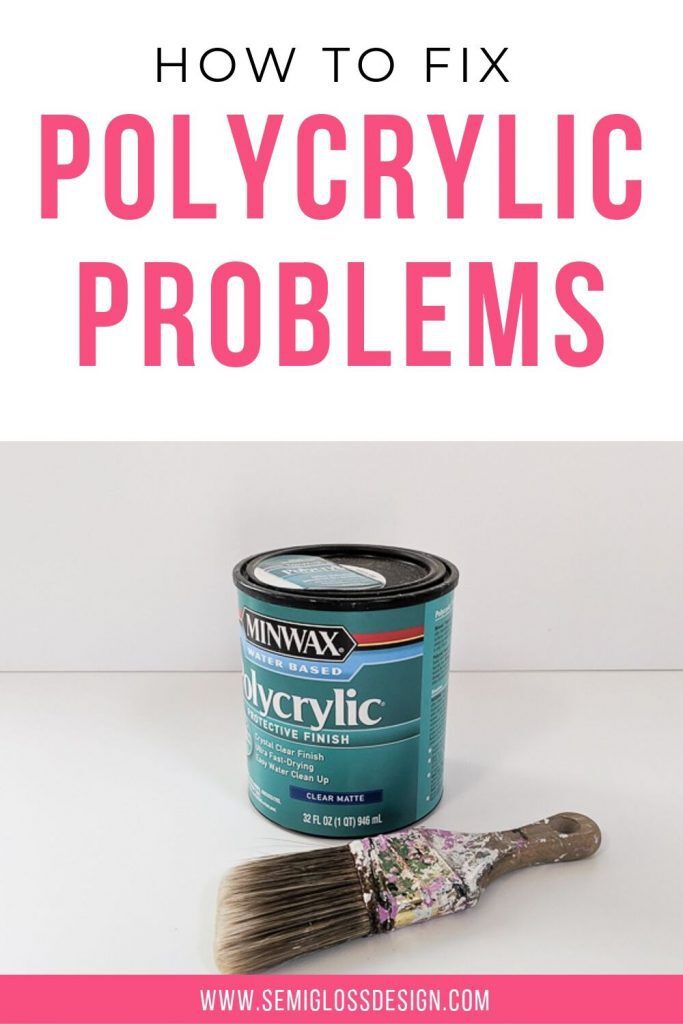
Will denatured alcohol clean a polyurethane brush?
Yes, denatured alcohol can clean polyurethane brushes. However, it is important to note that denatured alcohol will not remove all polyurethane deposits, so for best results it is recommended to use a cleaner specifically designed for cleaning polyurethane.
Can a second coat of polyurethane be applied without sanding?
Yes, you can apply a second coat of polyurethane without sanding. However, the second coat is more difficult to apply and may require additional sanding.
How do you clean polyurethane?
There are several things you can use to clean polyurethane. One option is to use a degreaser such as acetone or methylene chloride. Another option is to use a solution of soap and water.
Are acetone and white spirit the same thing?
Acetone and white spirit are different types of solvents. Acetone is a general purpose solvent, while white spirit is a special type of solvent used for painting and varnishing.
Acetone is a general purpose solvent, while white spirit is a special type of solvent used for painting and varnishing.
How to soften polyurethane?
There are several ways to soften polyurethane. One of them is to heat until it becomes soft. Another option is to add a solvent such as acetone or methyl ethyl ketone.
Does vinegar remove polyurethane?
There is no definitive answer to this question because vinegar can have different results depending on the type of polyurethane and the amount used. Some people have had success using vinegar as a cleaning agent, while others have had less success. Ultimately, it's best to test the vinegar cleaner on a small area first to make sure it works before using it on a larger area.
How do I remove dried polyurethane?
There are many ways to remove cured polyurethane. You can use a vacuum cleaner with a hose attachment, a hair dryer, or a chemical cleaner.
Are two layers of polyurethane enough?
Polyurethane coatings are usually sufficient to seal and protect wood surfaces. However, depending on the type of wood, climate and other factors, you may need to apply a second coat.
By Milena Anderson Reading 3 min. Views 5 Posted by
Short answer
How do you clean brushes between polyurethane coats?
One way to clean a polyurethane brush is to pour some hot water on the bristles and rub them with a stiff brush.
How to clean a polyurethane brush without finer paint?
Polyurethane brushes are not suitable for cleaning with paint thinner. Paint thinner will damage the brush and it will not work. Instead, use a mixture of mild soap and water, or a brush cleaner made specifically for polyurethane brushes.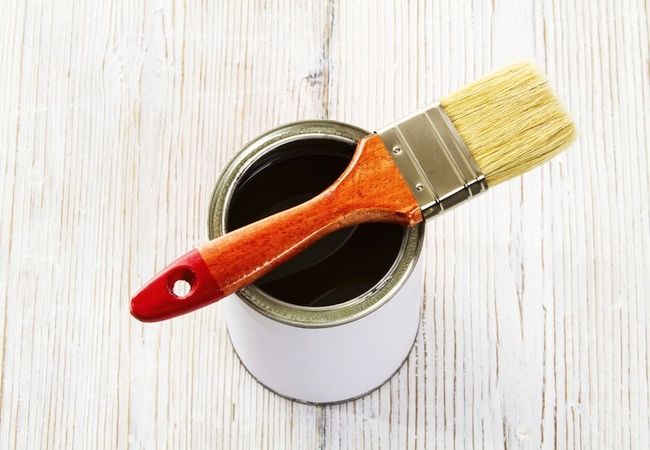
How do I clean my brush after Minwax polyurethane?
To clean the brush after Minwax polyurethane, pour some mineral spirits into the bristles and shake off the excess. Then rinse the brush with water.
Can polyurethane be cleaned with paint thinner?
Paint thinner is not suitable for cleaning polyurethane. This will damage the coating and may also cause some of the polyurethane to peel off.
How to prepare a polyurethane brush?
There is no universal answer to this question, since the preparation of the polyurethane brush depends on the type of polyurethane used and the specific requirements of the project. However, some basic tips that can be helpful in many cases include using a hard-bristled brush, brushing in a circular motion, and applying pressure while brushing.
Does white spirit remove polyurethane?
White spirit will remove some types of polyurethane, but this may not be entirely effective.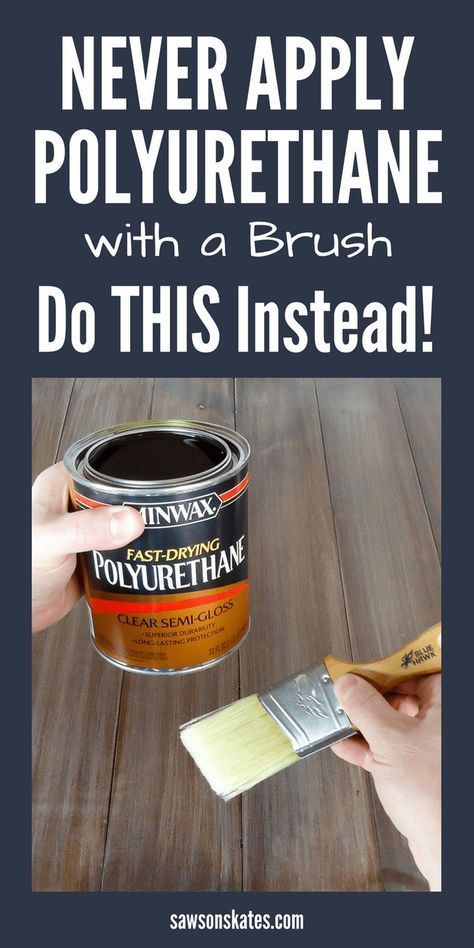
What can be used instead of mineral spirits?
There are a few things you can use instead of white spirit. One option is to use medical alcohol, which is also known as ethanol. Another option is to use white spirit, also known as ethyl alcohol.
What can be used to clean polyurethane?
There are several things you can use to clean polyurethane. Some people use white vinegar, others use a household cleaner like 409. Be sure to test the cleaning method on a small area first to make sure it won't damage the polyurethane.
Will a clean polyurethane brush denature?
No, denatured alcohol will not clean polyurethane brushes.
How to clean polyurethane from hands?
There are several ways to clean polyurethane from your hands. One of them is the use of soap and water. Another is to use hand sanitizer.
How do I remove dried polish from a brush?
If the lacquer is dry and brittle, you can try breaking it up with your fingers. If that doesn't work, you can try using a hair dryer on low heat.
If that doesn't work, you can try using a hair dryer on low heat.
Do you need two layers of polyurethane?
There is no one-size-fits-all answer to this question, as the amount of polyurethane needed depends on the type of surface to be treated and the severity of the condition. However, in general two coats of polyurethane should be sufficient to protect most surfaces.
What solvent do you use for polyurethane?
There are many types of thinners, but the most common is the hydrocarbon based thinner.
Can acetone be used to clean polyurethane?
Acetone is not a good cleaner for polyurethane. This can damage the plastic and cause it to crack.
Can water-based polyurethane be thinned with mineral spirits?
Yes, water-based polyurethane can be thinned with mineral spirits. However, the resulting mixture will be less viscous and more likely to cause splashing when applied to the surface.